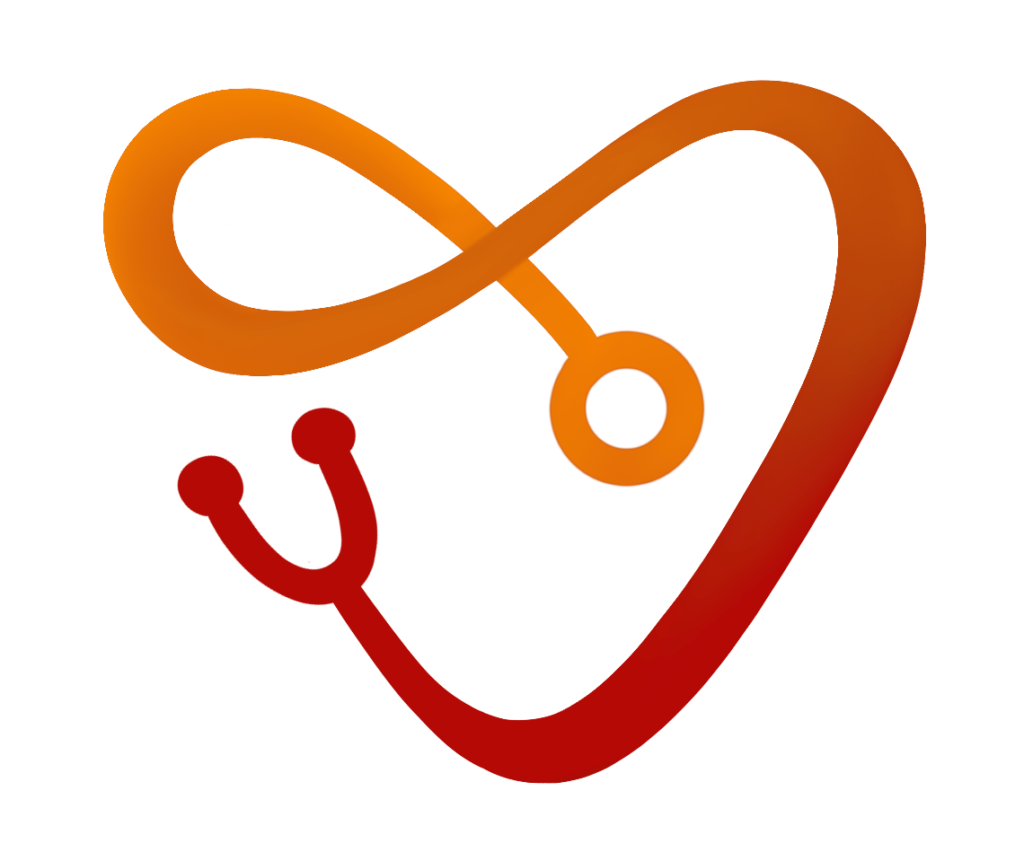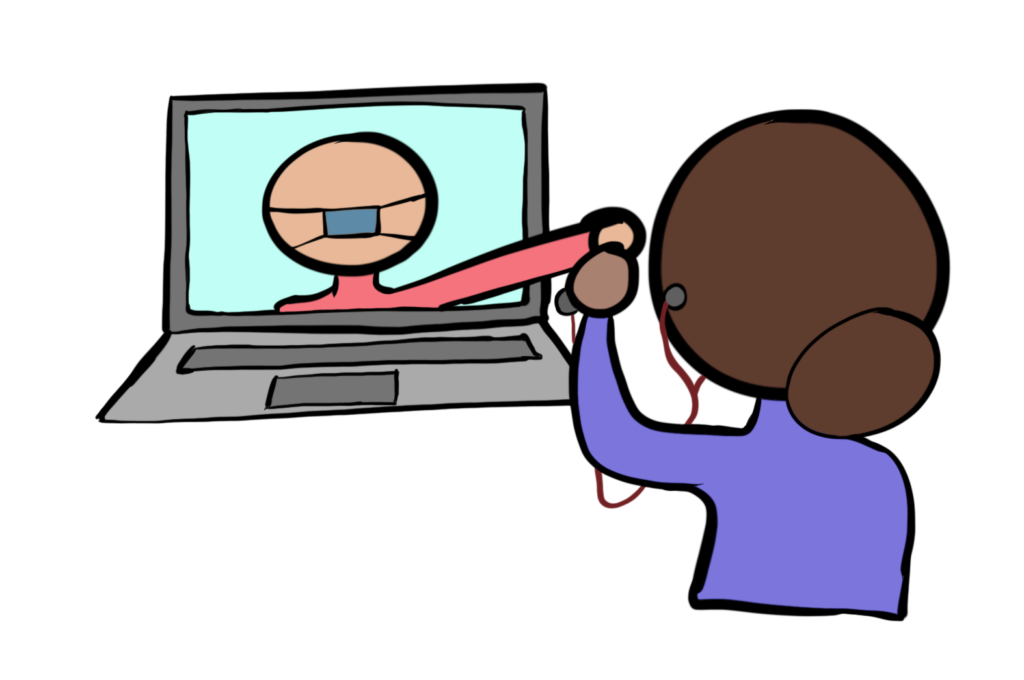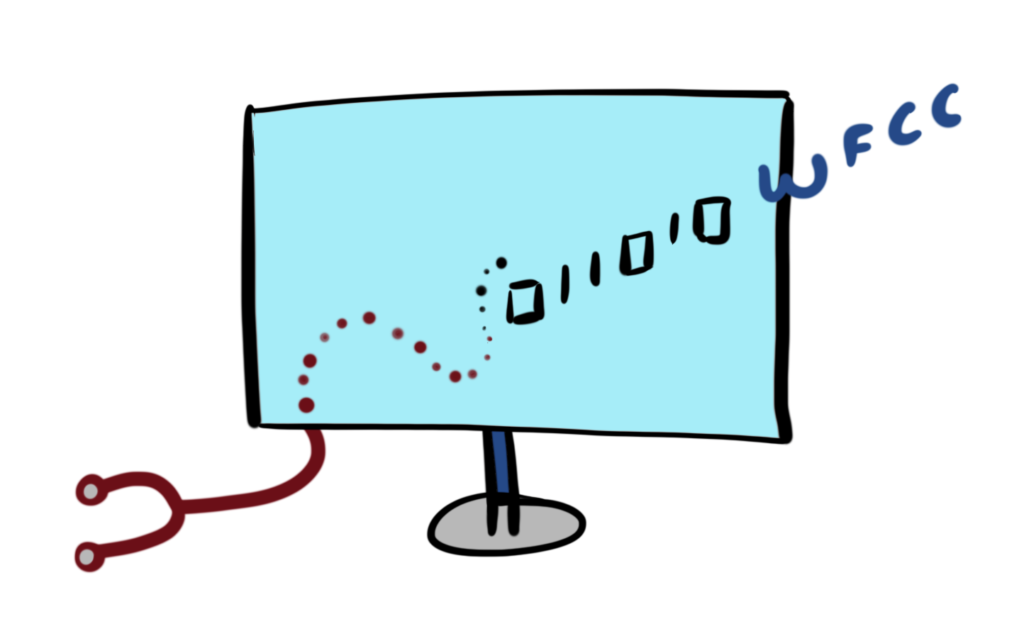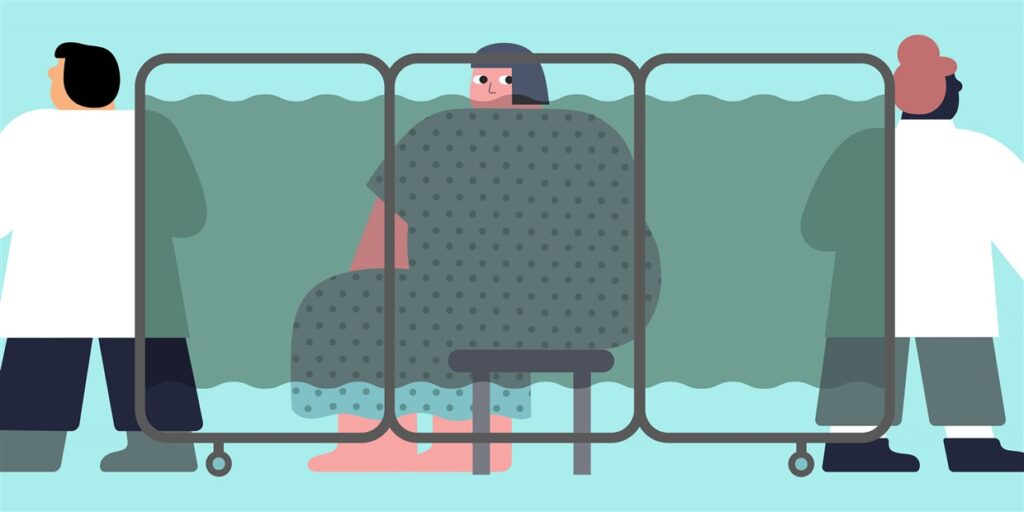Looks like a lot of fun!
Author: Sahil Page 4 of 16
Early in 2020, we announced in the WFCC newsletter that the organization, the Worcester Free Clinic Coalition, was changing its name to the Worcester Free Care Collaborative. Recently, a new logo was also created by Sahar Peerzade to better reflect the mission of the organization, its ties to central Massachusetts and the greater Worcester area, and bring a modern look to the organization. Perhaps more subtly, it also aims to represent the concept of healthcare visually and symbolically so that patients who do not read English will still able to recognize our mission.
The heart and stethoscope motif is multifaceted and we wanted the logo to convey a sense of softness and warmth to invite the community together. Of course, it represents the human heart and by extension, health, but it also represents the City of Worcester and its place as the Heart of the Commonwealth. We hope that the heart and stethoscope motif will allow anyone, regardless of their understanding of English, to recognize the healthcare role of the Collaborative and its member programs. We hope that this reflects our renewed outlook well into the future.
Sahil Nawab

Although my design was not selected, I also designed a logo for the WFCC and wrote about my creative process as well.
Going back to name change, there is actually quite a bit of backstory as to the reason for the change that deserves awareness and warrants further discussion by the community.
In some ways, one might argue, the original Worcester Free Clinic Coalition more accurately describes the specific role of the organization and its structure as a loosely associated set of independent free clinics. Although there has been a large push—especially since the 2019 Symposium—to integrate the clinics more tightly, each program nevertheless maintains its own set of volunteers, supplies, and location. The WFCC helps coordinate medical student volunteers and is itself primarily run by medical students from the University of Massachusetts Medical School.
John Romano, one the previous co-presidents of the WFCC, suggested the new name, Worcester Free Care Collaborative. It maintains the same acronym, which meant that at least some aspects of the prior identity could be maintained. One of the other suggestions that came from the community was the Greater Worcester Free Medical Consortium. A number of arguments were also had as to whether the organization is an “alliance” or an “association.” However, none of these names ended up sticking, likely due to the elegance of Romano’s suggestion. Ultimately, I think that the new name is excellent, if a little bit more vague as to the specifics of clinical care.
However, the question remains: what actually prompted the name change? The old name was, in the past, completely adequate and an effective descriptor.
The provoking incident occurred when the Worcester Islamic Center first opened their program in late 2019. After months of planning and discussion, the program opened to the public on Thursdays. In order to advertise the program to patients, a lawn sign was placed outside of the Worcester Islamic Center with the words “Free Clinic,” just like all of the other free clinics part of the WFCC. Ultimately, it was this sign that started the chain of events that necessitated changing the name of the organization.
Two weeks after that sign was placed, police officers knocked on the door of the Islamic Center. They explained that a passerby had complained about the sign and reported the program as they believed that it may not be a licensed medical clinic. For legal and liability reasons, their claim did have some merits. As a free medical program, it is staffed by volunteers, including licensed physicians and nurses, who donate their time and expertise in service of the community. Running only two hours per week and not providing any direct treatment themselves, it was thought to be unnecessary. The volunteers are simply advising patients about their conditions, just as if you were to ask a physician friend about a specific concern. It was especially helpful for patients who were visiting their children from another state or from abroad and only staying in the area temporarily. Their primary care physician might not be accessible for an appointment until they go back, but their health conditions persist regardless. “Free clinic” is still a good descriptor for lay people to better understand the general nature of the program and what services it offers.
Nonetheless, the police officers required that the sign be taken down. The clinic halted for the time being. The strange part is that this exact issue has not affected any of the other free medical programs in the area, many of which also have signs that use the wording “free clinic.” Why was it that only the program at the Worcester Islamic Center had issues with signage? It seems discriminatory in nature that only a free medical program opening at an Islamic Center, as opposed to a church or any other secular organization, would face such issues and complaints. Other programs with similar services, similar signage, similar outreach, and ultimately trying to serve the most vulnerable patients within the community, never had to face such problems. It stands to reason that any new “free clinic” should not be subject to such complaints.
The final result of all of this is that our language has changed. We no longer use the term “free clinic” and instead prefer to use “free medical program.” The WFCC changed its name to the Worcester Free Care Collaborative. While I do love the new name, it was born out of unjust circumstances.
“. . . one of the last independent scientists, . . . back when ‘scientist’ could be an entire job description rather than ‘botanist’ or ‘physicist’ or computational linguist.’ Someone who worked across disciplines on whatever they found interesting or whatever they were hired to do.”
This statement reminded me of the idea of the Renaissance Man whose broad knowledge base helped connect the dots. To me, this interdisciplinary role is the basis of modern innovation.
Note: This article was originally published as part of the Q4 2020 issue of the WFCC Newsletter and is reproduced here with permission. See original: http://www.sahilnawab.com/wfcc/q4_2020.pdf
This year, we have seen radical shifts in the way that healthcare is delivered. Early on, the COVID pandemic forced many non-urgent medical visits to be cancelled, including at the free clinics, helping healthcare institutions reduce the strain on limited resources. Almost immediately, the WFCC embraced the idea of virtual visits by setting up a free telehealth program. This idea was born out of the need to continue treating patients who would otherwise be almost completely disenfranchised from the healthcare system. Their ailments and conditions did not simply disappear overnight. Instead, telehealth became a lifeline for the uninsured and underinsured population in central Massachusetts.
The gravity of the COVID pandemic has rendered telehealth a necessary compromise to in-person visits for the time being. Even as recently as last year, telehealth was seen as cold and impersonal. However, the rapid adoption of the technology has shown that the most important aspect of care is the depth of focus and quality of communication. This type of compassionate care is one of the hallmarks of free medical programs, where physicians are not restricted by administrative overhead and can instead focus on developing a warm connection with patients. Dr. Jessica Zitter, a palliative care physician, explains that “it’s not about the medium, it’s about the message, and the way it’s delivered.” Through the telehealth program, the volunteer physicians have been able to continue to reach patients despite the challenging circumstances.
In fact, there are a number of surprising benefits to telehealth. Dr. Emil Baccash, a geriatric physician, explains that physicians get most of the information they need from their conversations with patients. When patients are in a comfortable environment, such as their own homes, they are likely to be “more relaxed and feel less rushed.” Virtual visits allow physicians to interact more warmly, without having to don frightening personal protective equipment that would be necessary for an in-person visit.

Prior to the COVID pandemic, telehealth was seen primarily as a method to reduce costs. However, for free medical programs, telehealth should instead be seen as a method to increase access to care. It erases geographic boundaries and allows patients to not worry about transportation or scheduling time off from work or from childcare responsibilities. Looking at telehealth technology through this lens leads to a mindset that encourages the build-out of necessary infrastructure to reach patients and break down barriers to healthcare for disenfranchised populations. It becomes easy to justify the need to invest resources in public facilities, such as keeping public libraries open for longer hours or providing dedicated equipment and tutorials in multiple languages.
However, free medical programs in particular must face the reality that some patients face serious difficulties accessing healthcare services virtually. Some may not have a capable device or an internet connection, while others may not speak English or may not understand how to operate their devices adequately. Addressing this need is an intense area of focus for many organizations, including the Worcester Free Care Collaborative. However, this cannot be a solitary endeavor. It requires a concerted effort from local governments and organizations to invest in public infrastructure and encourage more flexible workplace policies that allow employees to visit healthcare providers and care for their children and families. Solving these root problems will immediately improve the healthcare of the entire population.
Ultimately, telehealth is not a substitute for in-person visits. While the circumstances may force virtual visits to continue throughout the foreseeable future, it is not sustainable for all types of conditions. Some simply cannot be treated through telehealth. Healthcare institutions should determine where telehealth can be an effective way to help increase care, for example, in treating conditions such as depression, hypertension, or diabetes.

“Telemedicine was a solution to an immediate problem,” says Dr. Ateev Mahrotra, but perhaps it can become part of the long term solution too. When in-person visits return, telehealth can be used to augment the care that free medical programs provide and get more patients access to the care that they need. To do so requires defining a comprehensive telehealth policy that addresses the needs of both patients and providers with the explicit goal of increasing access to healthcare. Patients who still require in-person care or do not have access to telehealth services can still come in. Others, particularly for follow ups where it can be challenging to get patients to come back, may instead opt for a virtual visit. Setting up the facilities to provide this level of effective telehealth services at the free clinics requires funding and up-front investment from the community, local governments, and other institutions.
Continuing the use of telehealth, even well after the COVID pandemic ends, opens many potential avenues to bring free healthcare to the people that need it most. With the help of the local community and government, it is necessary to commit resources to bringing the idea of digital health to as many patients as possible. Telehealth is poised to be a transformative technology to increase access to healthcare for disenfranchised populations. However, it requires commitment and investment to make sure that patients are not forgotten about or left out as a result of structural deficiencies. Taking this avenue requires the support of the community and policymakers to turn this vision into a reality.
Dossier
“Is Telemedicine Here to Stay?” by Reed Abelson, August 3, 2020. https://www.nytimes.com/2020/08/03/health/covid-telemedicine-congress.html
“The Evolution of the Robot-Doctor,” by Jessica Nutik Zitter, December 1, 2020. https://www.nytimes.com/2020/12/01/well/live/Telemedicine-Hospitals.html
“A Pandemic Benefit: The Expansion of Telemedicine,” by Jane E. Brody, May 11, 2020. https://www.nytimes.com/2020/05/11/well/live/coronavirus-telemedicine-telehealth.html
“Telehealth wasn’t designed for non-English speakers,” by Nicole Wetsman, June 4, 2020. https://www.theverge.com/21277936/telehealth-english-systems-disparities-interpreters-online-doctor-appointments
“Telehealth needs medical interpreters, broadband expansion to reach underserved,” by Kat Jercich, June 1, 2020. https://www.healthcareitnews.com/news/telehealth-needs-medical-interpreters-broadband-expansion-reach-underserved
What are your thoughts on this? I’m curious.
The role of a physician is a strange one: they diagnose, they teach, they advise, and they support, all at once. At times, however, these roles can conflict with one another and the task of the physician becomes balancing the various effects of each action with the ultimate goal to act in the best interest of the patient. It’s not always clear exactly how to do that, and there isn’t always a right way to do so.

One of the most important steps is to cultivate a good patient-physician relationship. First and foremost, this requires developing rapport with the patient. Analyzing this relationship through the lens of a rhetorician is invaluable—after all, this relationship is built on effective communication. In general, we can consider the physician as the rhetorical orator and the patient as the rhetorical audience.
Today, the power of identity has become well-known, especially as it relates to group identity and social psychology. Rhetoricians call this same concept, ethos. It is the foundation of effective communication. Before any type of persuasive argument can work, a physician must first establish a level of ethos, or trust, to build credibility with the patient. There are a number of ways to do so, for example, by speaking with a patient in a style that resonates with them, or pointing out connections or similar experiences. In fact, building ethos is exactly what YouTubers and social media influencers do: ethos is the product that they sell to advertisers and why their techniques are so valuable to brands.
As a result, their actions and outcomes become a natural manifestation of their identity.
In medicine, the patient-physician is uniquely infused with institutional ethos, which is the idea that society places its trust in physicians to take care of patients as a result of their expertise and the backing of the universities, medical schools, and accreditation boards that trained and certified them.
Once this baseline level of trust is established, patients feel comfortable sharing important and sometimes private details of their health with their physician and physicians are able to instruct their patients how to improve their health with the confidence that patients will continue in compliance. Studying the foundations of this relationship allows us to glean insight into the requirements needed to build better patient-physician relationships and help patients more effectively and appropriately conducive to their goals.
And this is key: “conducive to the patient’s goals.” In recent times, health has become more objective and to great effect. However, because of this idea of “chasing objective metrics,” the patient’s goals and needs can sometimes be forgotten in order to achieve an “ideal health.” One of the most salient examples of this is in the treatment of obesity.
Physicians tend to think and prioritize conditions based on their likelihood to harm the patient. This is not an exact science. In fact, a number of moral and ethical dilemmas present themselves through this line of thinking, but this has been discussed ad nauseum, and so I will refrain from it here. However, it has been proven time and time again that obesity is associated with other comorbidities and exacerbates the harmful effects of other conditions. But not all patients have a desire to prevent obesity nor is it always necessary to encourage patients to change.
I am fat. I am a fat activist. Like a lot of larger-bodied people, I have embraced the word fat. Doing so allows me to buy clothes that fit, rather than those that could fit if I changed. It gives me permission to go to spin classes (in pre-pandemic days) and worry only about trying to beat other people’s scores. It allows me to exist. The word fat, I have made clear to those around me and to myself, is not associated with a moral or intellectual or health failing. It is a descriptor. I have brown hair, blue eyes, excellent taste in caftans. I’m 5’9”, and I am fat.
Emily Duke
One example that I think is similar, but does not have the same associations as obesity is that of mental health and mental illness. Medicine—and society—as a whole has moved towards treating mental illnesses in the same way as a physical illness. The stigma surrounding mental health, while still there, is diminishing. However, even this progress, which is objectively a good thing, has some adverse effects and unintended consequences that physicians must reckon with when diagnosing patients with mental conditions, especially depression and anxiety. There are physical reasons why a person may present with sustained long-term depressive symptoms; these can be readily treated with medications and lifestyle modifications to great effect. The improvements to a patient’s quality of life can be astounding when treated effectively.
But alas, there is one other level of symptoms to contend with: long-term depressive symptoms that are not sustained, that is, the symptoms are not always present. This is problematic because often medicative treatment is not necessary or even ideal. Patients may present with these symptoms and think to themselves, “Oh yes, I have depression now, and so I need these medications to help treat them and improve myself.” They see just how effective it can be in some people and therefore believe that those effects can readily translate to themselves.
The apparent decline in childhood mental health is itself depressing. I suspect, however, that one of the factors driving it is increased diagnosis due precisely to the increasing prevalence of mental-health services. It is one thing to detect diseases with well-established biological bases; early detection of cancer has saved many lives. It is quite another to detect diseases on the basis of a rough group of ill-defined symptoms.
Crispin Sartwell
The unfortunate consequence of this is deeply embedded with the concept of identity. Patients believe that because they have depressive symptoms the best option is to treat it with medications. This is unfortunately misguided. There are absolutely times in our lives when we may be sad or down on ourselves. We may have depressive symptoms as well. It may even take a long time for these to resolve. But, that does not mean that we have depression. And therein lies the dilemma that physicians must grapple with. Patients who think this way identify themselves as patients with chronic depression needing treatment, even if that is not the case. The concern is that they become their own road block to improving their health. Patients often start going down the rabbit hole of thinking that there is nothing that they can do to help themselves overcome their symptoms. As a result, their actions and outcomes become a natural manifestation of their identity. They take on the mindset that their improvement lies in external factors beyond their control, such as medications, when in fact there are a number of concrete steps that they can take, including increasing exercise, better sleep schedules and routines, healthy coping mechanisms, and stress relieving activities, among others. When implemented, these can help patients drastically improve their health.
Of course, it is extremely challenging to do so. Sometimes patients need an external factor to help them. There are absolutely times when treatment will be very effective and allow patients to more easily begin and maintain lifestyle modifications. Ultimately, many might even be able to come off of medications because their overall health has so significantly improved. I must reiterate the importance of reducing the stigma of treating mental illnesses. There is an immense benefit to proliferating treatment to those that need it. However, I do think that it is valuable to highlight some unintended consequences of this major societal push that are important to keep in mind, especially as people in mainstream society are beginning to explore this concept of identity and recognize the power it can hold.
Sometimes, it can be salient to just eschew metrics all together and work directly with the patient to understand what their personal health goals are.
Larger-bodied people are often told their weight is the result of their mind: a lack of willpower, a lack of knowledge about nutrition, or in my case, an emotional weakness. Following my parents’ divorce at 5 years old, my pediatrician took a look at my BMI, told me that I was an emotional eater, and subsequently put me in therapy. Because I was a literal kindergartner, my food intake was largely controlled by the adults in my life. Being told my emotional issues were at fault for my size didn’t make a ton of sense, but I also didn’t have much of a choice at the time in my health decisions, so to therapy I went. In between playing board games with me, my Upper West Side shrink drew a body diagram with a jail located in the torso. The jail was full of anthropomorphized feelings labeled “anger,” “sadness,” “guilt,” and it was guarded by pieces of pizza and cake. From my understanding, childhood therapy is just playing Chutes and Ladders with a menopausal divorcée until you agree to stop eating carbs.
[. . .]
Getting to “healthy” involved a lot of shotgunning Diet Cokes to feel full. After I caved to hunger pangs and snuck a slice of Healthy Choice turkey at 1 a.m., I journaled that I was a “stupid fat bitch” under the glow of a clip-on reading light. This classic healthy behavior got me to a BMI in the dead center of the “healthy” range, and a LOT of compliments. No one questioned how it was happening until the numbers kept going down. Disordered eating affects people all across the size spectrum, and it has dangerous health consequences even for those “with obesity.” The only hint I had on this was a single Grey’s Anatomy episode in which Meredith punctured a heart during surgery—the patient was obese but had perilously thin organ walls because of undiagnosed anorexia.
No one noticed mine until I was Olsen twin–thin. Why was subsisting exclusively on carrot sticks and cherry tomatoes dipped in ketchup OK when I was 180 pounds but not when I was 103 pounds? The BMI chart reared its ugly head again, and I had to gain weight or I couldn’t play sports, or stay in school. This did not involve getting “healthy,” just continued attempts to game the chart. Instead of fasting and taking diuretics before stepping on a scale, I was chugging gallons of Poland Spring in the bathroom of my doctor’s office before a mandatory weekly weigh-in.
[. . .]
As far as I’m concerned, I was fat with BMIs ranging from 14 to 40. No matter how thin I got, there was always a larger-bodied person trying to get out. I can own being fat, because I have internalized that regardless of my weight, it is my chosen identity, an identity that ultimately gives me more freedom than it takes away. Obese is not an identity I give myself: It is a label put on me by others that I have no control over. But if briefly calling myself obese would make me safer, it was worth it. And more importantly, I realized it’s something I am capable of doing.
Emily Duke
The utmost task of the physician is to deeply understand these nuances, balance these conflicts, and make a determination as to what is in the best interest of the patient. Physicians must understand the goals of the patient in order to make recommendations that are appropriate. Having a rhetorical understanding of the patient-physician relationship allows communication to be more effective in both directions and will ultimately lead to better health outcomes for all patients.
Dossier
“I Am Fat. To Get the Vaccine, I Had to Say I Am ‘Obese.’” by Emily Duke, March 2, 2021. https://slate.com/technology/2021/03/vaccine-eligibility-obesity-can-be-healthy.html
“When doctors fat-shame their patients, everybody loses,” by Kunal Sindhu and Pranav Reddy, August 24, 2019. https://www.nbcnews.com/think/opinion/when-doctors-fat-shame-their-patients-everybody-loses-ncna1045921
“Do Psychologists Cause ‘Mental Illness’?” by Crispin Sartwell, May 20, 2021. https://www.wsj.com/articles/do-psychologists-cause-mental-illness-11621548927
Throughout the internet, or perhaps just in the spaces that I regularly visit, it seems that the word, “cinematic,” has become à la mode. In fact, every year, new trends show up on YouTube where people explain how to create the most cinematic visuals; at one point, it was using drone shots, at another, slow motion, and another, a widescreen aspect ratio.
I have always been a subscriber to the ethos that cinematic means like the movies. And if you pay attention to movies—or at least the ones that were actually great—you might find that very few used the same cinematic tricks that YouTubers emulate and often overuse. What made the movie cinematic was not a gimmick, but rather it was the story.
In “Show Your Work,” Austin Kleon writes:
The most important part of a story is its structure. A good story structure is tidy, sturdy, and logical. Unfortunately, most of life is messy, uncertain, and illogical. A lot of our raw experiences don’t fit neatly into a traditional fairy tale or a Hollywood plot. Sometimes we have to do a lot of cropping and editing to fit our lives into something that resembles a story. If you study the structure of stories, you start to see how they work, and once you know how they work, you can then start stealing story structures and filling them in with characters, situations, and settings from your own life.
Austin Kleon
So far, this is the clearest definition of the word, “cinematic,” that I’ve come across, especially from the perspective of a writer or storyteller. Cinema is supposed to explore a heightened sense of reality.
This is the job of the filmmaker or the writer—to take their own experiences, their own inspirations, their own dots that they’ve stumbled across, and put them together into a cohesive narrative. It involves cleaning up the story, removing extraneous information, and focusing heavily on the emotional journey told through the experiences of characters, settings, and plots.

The best authors often incorporate elements of their own real life into their work. But they don’t simply retell events or use characters from the real world, they take their experiences and heighten them. Ultimately, the point of a film is to show something that is greater than reality—a little bit better and more perfect than what we might experience in the real world.
Dossier
“Show Your Work!” by Austin Kleon, 2014.
“The Basis of Modern Innovation,” by Sahil Nawab, January 24, 2021. http://www.sahilnawab.com/blog/the-basis-of-modern-innovation/
